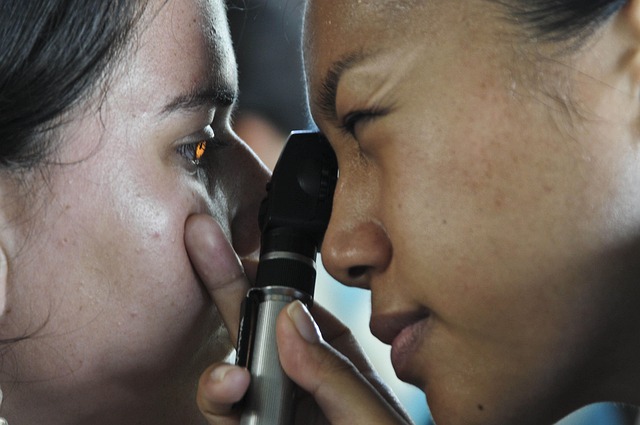Recognizing Early Signs of Blurred Sight and When to Seek Care
Blurred sight can develop gradually or appear suddenly, and noticing early changes in your vision helps protect long-term eyehealth. This article outlines common early signs, likely causes ranging from refractive errors to retina or cataract issues, and practical guidance on when to consult optometry or ophthalmology for diagnosis and rehabilitation.

Vision changes: what to notice
Small shifts in vision often start with subtle symptoms. Blurred vision may affect one or both eyes, occur at specific distances, or worsen with fatigue. Keep track of new difficulty reading fine print, trouble recognizing faces, frequent squinting, or needing more light to see clearly. Note whether blurriness fluctuates during the day or follows periods of screen use or poor sleep. Recording onset, duration, and whether one eye is affected helps clinicians determine if the cause is refractive, neurological, or related to the retina.
When to consult optometry or ophthalmology
Consider seeking an optometry appointment for routine vision testing, refraction checks, and eyeglass or contact lens updates. Optometrists screen for common issues and can refer to ophthalmology when medical or surgical care is needed. Urgent or sudden vision loss, flashes of light, a curtain-like shadow over part of the field, severe eye pain, or double vision warrants immediate evaluation by ophthalmology or emergency services. Early consultation speeds diagnosis and treatment, improving outcomes for many eye conditions.
Refraction errors: myopia, hyperopia, presbyopia
Many cases of blurred sight result from refractive errors. Myopia (nearsightedness) causes distance blur, while hyperopia (farsightedness) affects near tasks and can cause intermittent blur and eyestrain. Presbyopia, an age-related change in near focusing, typically begins in the 40s and presents as difficulty reading small print without additional reading glasses. A refraction test by an optometrist or ophthalmologist determines the correct lens prescription and can often restore clear vision when refractive error is the primary cause.
Retina and cataract issues
Not all blurring is due to refractive error. Retina problems—such as macular degeneration, diabetic retinopathy, or retinal detachment—can reduce central or peripheral vision and sometimes present with distortion, dark spots, or sudden loss. Cataract formation clouds the eye’s natural lens and causes progressive blurring, glare, and changes in color perception. Ophthalmology assessment includes retinal examination, imaging when indicated, and discussion of medical or surgical options tailored to the specific retinal or lens condition.
Eyestrain, screens, and maintaining eyehealth
Prolonged screen use, poor lighting, or repetitive near work commonly produce eyestrain and temporary blurring. Symptoms may include dry eyes, headaches, and fluctuating focus. Practical measures to reduce screen-related blur include the 20-20-20 rule (every 20 minutes, look 20 feet away for 20 seconds), optimizing screen brightness and contrast, using appropriate ergonomic setups, and ensuring regular breaks. Maintaining overall eyehealth also involves controlling systemic conditions (like diabetes and hypertension), using prescribed corrective lenses, and protecting eyes from UV exposure.
Diagnosis, treatment, and rehabilitation
A structured diagnosis starts with a comprehensive eye exam: measuring visual acuity, refraction, slit-lamp evaluation, intraocular pressure check, and retinal inspection. Additional tests may include optical coherence tomography (OCT) for retinal detail or visual field testing. Treatment depends on diagnosis—corrective lenses for refractive errors, topical or systemic medications for inflammatory or pressure-related conditions, cataract surgery for lens opacities, or retinal therapies for vascular or degenerative disease. Vision rehabilitation can help people adapt to lasting changes; services range from low-vision assessments to assistive devices and orientation training. Regular follow-up ensures that changes are tracked and management adjusted.
This article is for informational purposes only and should not be considered medical advice. Please consult a qualified healthcare professional for personalized guidance and treatment.
In summary, recognizing early signs of blurred sight—whether gradual or sudden—supports timely diagnosis and better outcomes. Paying attention to patterns, seeking optometry for routine assessment, and consulting ophthalmology for urgent or medically complex signs are practical steps to protect vision. Proactive eyehealth habits and appropriate rehabilitation services further support daily function when vision changes occur.






